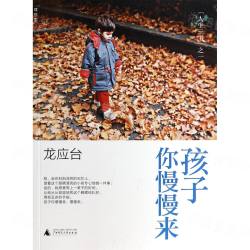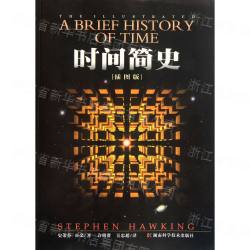-
内容大纲
本书由世界知名英语教学专家Penny Ur撰写,共分20单元,每单元都以教学中的问题为导向,并辅之以言简意赅的理论框架,再搭配丰富的教学实例、实践建议和教学任务,使得本书堪称一站式英语教学指南。无论是英语教师培训者、职前英语教师,还是一线英语教师,都会从中获得启发与助益。 -
作者介绍
-
目录
Acknowledgements
Introduction
1 English teaching today: what do I need to know?
1.1 Teaching priorities
1.2 English as an international language
1.3 Language-acquisition theories and teaching methodologies
1.4 Computerized teaching materials
1.5 Motivation
2 The lesson
2.1 The lesson: different perspectives
2.2 Functions of the teacher in the English language lesson
2.3 Interaction patterns in the lesson
2.4 Lesson preparation
2.5 Written lesson plans
3 The text
3.1 What is a text?
3.2 Teaching the text: the goals
3.3 Comprehension of content
3.4 Language learning
3.5 Discourse analysis
3.6 Follow-up tasks
4 The task
4.1 The language-learning task
4.2 Task evaluation
4.3 Organizing tasks
4.4 Interest
4.5 Homework
5 Teaching vocabulary
5.1 What is vocabulary?
5.2 What students need to learn: aspects of vocabulary knowledge
5.3 How best to teach vocabulary: some facts and figures
5.4 Presenting new vocabulary: selection and presentation
5.5 Vocabulary review: consolidating andextending lexical knowledge
5.6 Vocabulary assessment
6 Teaching grammar
6.1 What is grammar?
6.2 What students need to learn: standards of grammatical acceptability
6.3 How best to teach grammar: explicit and implicit processes
6.4 Presenting grammar: explanations
6.5 Grammar practice: consolidating and automatizing grammatical knowledge 82
6.6 Grammar assessment
7 Error correction
7.1 Error correction: for and against
7.2 Attitudes to error correction
7.3 Student preferences
7.4 Oral correction
7.5 Written correction
8 Teaching listening
8.1 Goals and problems in teaching listening
8.2 Listening activity design (1): the text
8.3 Listening activity design (2): the task
8.4 Types of activities
8.5 Adapting activities
9 Teaching speaking
9.1 Goals and problems in teaching speaking
9.2 Speaking activity design (1): topic and task
9.3 Speaking activity design (2): sample activities
9.4 Speaking activity design (3): presentations
9.5 Pronunciation
10 Teaching reading
10.1 What is reading?
10.2 Beginning reading (1): phonemic awareness
10.3 Beginning reading (2): practical principles
10.4 Beginning reading (3):reading tasks
10.5 Fluent reading
10.6 Extensive reading
11 Teaching writing
11.1 What is writing?
11.2 Formal and informal writing
11.3 Beginning writing: the letters
11.4 Tasks that promote fluent writing
11.5 Process writing
11.6 Spelling and punctuation 163
12 Assessment and testing 167
12.1 Functions and types of assessment
12.2 Giving a grade
12.3 Test design (1): testing accuracy
12.4 Test design (2): testing comprehension and fluency
12.5 Administering tests in class
13 The syllabus
13.1 What is a syllabus?
13.2 Types of language syllabus
13.3 Using an approved syllabus
13.4 Evaluating the syllabus
14 Materials
14.1 How necessary is a coursebook?
14.2 Coursebook evaluation and selection
14.3 Adapting course materials
14.4 Supplementary materials (1): paper
14.5 Supplementary materials (2): digital
15 Teaching content
15.1 Different kinds of content
15.2 Cultural content
15.3 Content and language integrated learning (CLL)
15.4 Literature as a component of the English course
15.5 Underlying messages
16 Classroom interaction
16.1 Teacher questioning
16.2 Group and pair work
16.3 Individual work
16.4 Blended learning
17 Classroom discipline
17.1 What is classroom discipline?
17.2 What teachers can do to create a disciplined classroom
17.3 Dealing with discipline problems
17.4 Discipline problems: episodes
18 Learner differences (1): age
18.1 Differences between younger and older learners
18.2 Teaching young learners
18.3 Teaching adolescents
18.4 Teaching adults
19 Learner differences (2): teaching heterogeneous (mixed) classes
19.1 Differences between individual students in the heterogeneous class
19.2 Problems and advantages
19.3 Practical principles
19.4 Teaching high and low achievers
20 Teacher development
20.1 The first year of teaching
20.2 Lesson observation
20.3 Ongoing development
20.4 Development through reading and further study
20.5 Further development: your own contribution
Glossary
Bibliography
Index
同类热销排行榜
- 目送/人生三书
-
 21世纪的《背影》 + 感人至深的“生死笔记”+ 龙应台亲手摄影 + 跨三代共读的人生之书!
华人世界率性犀利的一枝笔,龙应台独家...
21世纪的《背影》 + 感人至深的“生死笔记”+ 龙应台亲手摄影 + 跨三代共读的人生之书!
华人世界率性犀利的一枝笔,龙应台独家...
- 顾城的诗(金版)(精)/蓝星诗库
- 人类群星闪耀时(插图本)/译林名著精选
- 牛津高阶英汉双解词典(附光盘第8版)(精)
- 文化苦旅(新版)
- 摆渡人
- 解忧杂货店(精)
- 骆驼祥子
- 曾国藩(又笨又慢平天下)
- 查令十字街84号(珍藏版)(精)
推荐书目
-

孩子你慢慢来/人生三书 华人世界率性犀利的一枝笔,龙应台独家授权《孩子你慢慢来》20周年经典新版。她的《...
-

时间简史(插图版) 相对论、黑洞、弯曲空间……这些词给我们的感觉是艰深、晦涩、难以理解而且与我们的...
-

本质(精) 改革开放40年,恰如一部四部曲的年代大戏。技术突变、产品迭代、产业升级、资本对接...

 [
[
